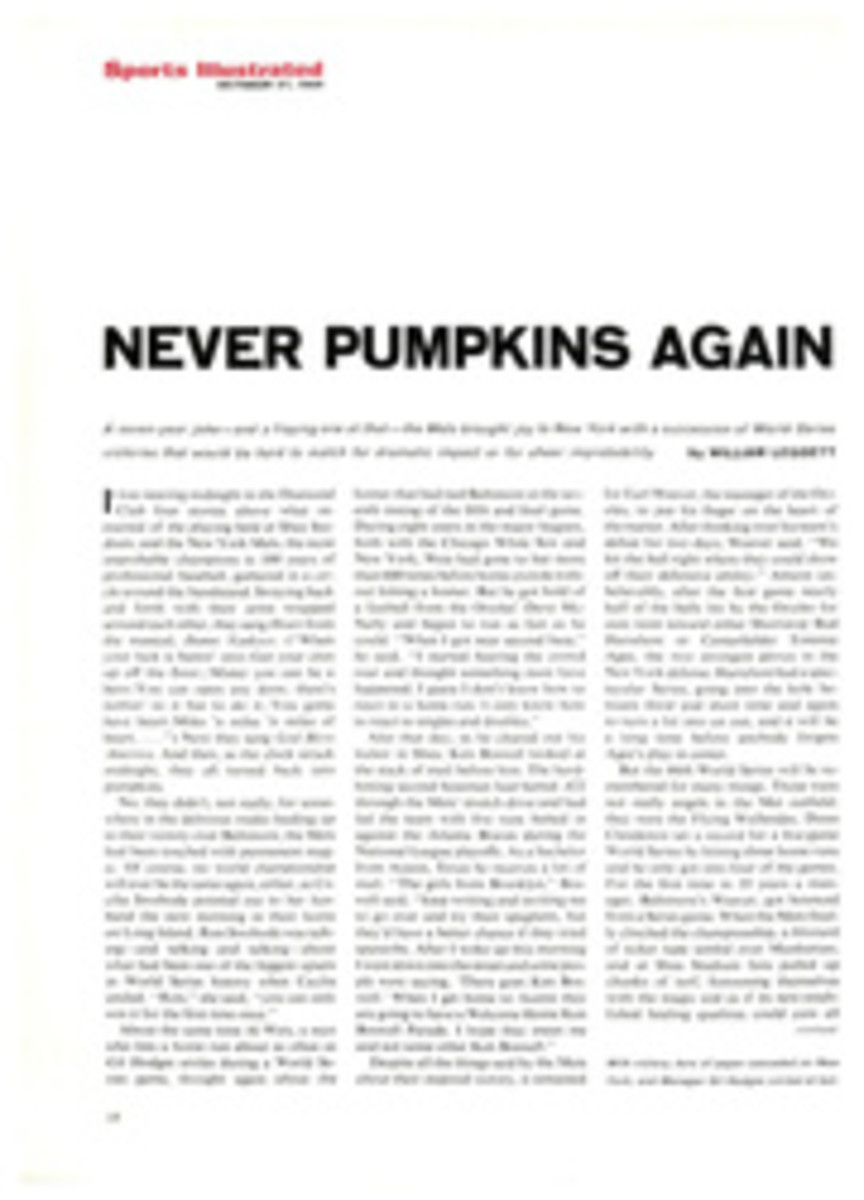
Sneak preview from a happy hunting ground
The most enjoyable way of becoming an instant expert on the forthcoming waterfowl hunting season in the U.S. is to peek, and one of the best views is to be found at Tom Wheeler's Cabbage Willows Camp on James Bay, Quebec.
There, where shooting began this year on Sept. 11 and closed with the first snows Oct. 13—at least a month earlier than in the U.S.—hunting was spectacular, with strong indications that the 1969 season farther south may well be the best in 10 years.
Millions of snow geese, blues and Canadas move south from Arctic breeding grounds to the marshes along James Bay and, for a few brief weeks of autumn, rest among the cattails and bulrushes at Cabbage Willows, fattening themselves on salt grasses, sedges and herbs. For centuries the Cree Indians knew about this part of James Bay, but they kept the secret to themselves. Each fall small bands of Indians would move by canoe from their villages at Moosonee and Rupert House to camps at Cabbage Willows. There in the weeks before winter they harvested enough geese to feed themselves until spring. It was not until 1945 that the white man discovered this Indian hunting ground, and even today few white men have hunted there.
It is not an easy place to reach. The road north ends at Matagami, some 140 air miles away, and flights from there depend upon the whims of weather. Of a dozen shooting camps on James Bay, the oldest and best is Wheeler's at Cabbage Willows. A pioneer in aviation and wilderness exploration, Wheeler made his early bush flights into northern Quebec with one sportsman's eye focused on where the hunting and fishing looked best. He opened his camp 24 years ago when he obtained a long-term lease from the provincial government on 32 square miles of marsh—20,000 acres of the choicest waterfowl resting and feeding grounds. The original camp has grown over the years into unexpectedly luxurious quarters for an area so remote. From the air the double cluster of buildings, one on either side of a tributary that runs west from Cabbage Willows River, gives the appearance of a small community. Some 15 Cree Indians with their wives and children live in the southerly buildings.
Across the tributary, which is spanned by a narrow footbridge, sits the main building with its bunkrooms, each sleeping six, comfortable lounge, bar, dining room and kitchen and several additional cabins and storerooms. Every building is insulated, heated and electrically lighted. The meals are feasts usually begun with such appetizers as escargots and smoked sturgeon, and the wine at dinner is served in crystal.
In addition to Cabbage Willows and his main Lac Ouimet Club 80 miles north of Montreal at St. Jovite, Tom Wheeler operates three fishing camps: Finger Lake in Ungava, where during the July-August season anglers take Arctic char to 28 pounds and lake trout to 40; and Lac Repos and Lac La Carpe camps north of St. Jovite, from which anglers fish for speckled and lake trout in 35-odd lakes accessible only by air.
The standards, the style and the sport at all Wheeler camps are strictly first class, which is why 80% of his clients are repeat business. Considering this, the rates are a bargain. A three-day shoot at Cabbage Willows, plus a day at each end getting there, costs $530 and includes everything from arrival at Montreal to departure: bar-equipped limousine from and to the airport, pre- and posthunt accommodations at Lac Ouimet Club, transportation by land cruiser and floatplane to and from James Bay, food, lodging, liquor, ammunition, licenses, Indian guides, canoes, outboard motors, waterproof clothing, hip boots, gratuities, and even such personal items as long Johns, socks and a gun, should a hunter come without them.
The flight from Matagami to camp takes an hour and 20 minutes in normal weather, but it must be timed to the high tide and there is little margin for delay. Once in camp, the hunters are similarly dependent upon tides, since the canoes can navigate the two miles or so of river to the hunting grounds only when the water is high. Then they must wait until the next high tide to return. Since tides vary during the season, shooting parties often leave camp before dawn, stopping on the way to gather willows for blinds.
Near the river's mouth the boats move away from the broad water, following a network of streams deep into the marsh. There the Indians moor the boats and, two Indians to each pair of hunters, head out on foot. Finally the Indians stop. They stick the willows into the ground, fashioning a circular blind, shoulder high, four feet in diameter. Then they move to a pool a dozen feet away. With paddles they scoop up mud, shaping and smoothing it into mounds with their hands. They pull handkerchief-size white rags from the canvas bags and place them carefully over each mound of mud. They put other rags over bent willows and plant these, too, in the mud.
Soon there are perhaps a dozen mud and willow decoys that look nothing like geese, but the Indians seem satisfied. They move beyond the decoys to a clump of willows and crouch among them. A light rain is falling and the sky has turned from black to gray. Then, suddenly, the birds begin to fly. They appear on the horizon in V-shaped wedges, honking and gaggling and shrieking. From the bushes the Indians call back, their voices rising higher as the geese answer. A flock of birds passes over the decoys, swings around and circles back.
"Shoot! Shoot!" the Indians shout.
The birds barely clear the blind, swooping over the hunters' heads from behind. They are out of range in seconds. The hunters, caught off-guard, look dumbly after them. One of the Indians stands up and waves his arms.
"Turn around," he calls. "Face other way!"
Feeling foolish and inept, the hunters turn their backs to the decoys.
Another flock circles and comes back. This time the birds set their wings, gliding directly toward the blind. Together the hunters stand and fire. Three geese fall. The Indians run out and carry them back to the decoys. They prop up the geese with sticks, adding them to the bogus flock.
The birds come in now from all directions. By 7:45 there are nine real geese propped among the imposters at the blind. The limit is five per hunter per day. There is still one bird to go.
And then, as abruptly as their flight began, it stops. An occasional flight passes by, high and uninterested. An hour passes without a shot being fired. Then finally a flock approaches, lower than the others. It hesitates, studying the gathering below, then flies on. One goose separates from the flock. It is coming in, but high. At the blind it flares. The hunter fires. We have our limit.
It is 9 o'clock. There are still two hours to the next tide and a limit of ducks to be taken. The Indians gather the geese and boxes and bits of rags and we start back across the marsh to the boat.
The Indians stop this time at a point in a channel almost as wide as the main river. Again they produce their bits of cloth, fashioning new decoys at the edge of the point. They are like the first ones and look no more like ducks than they did like geese. But in minutes a green-wing teal flies directly into them. Several more come by. There are no flocks of ducks this morning, only singles and pairs, but they come in steadily.
After a while another canoe comes along. It carries the Royal Canadian Mounted policeman who is stationed at Cabbage Willows for the shooting season. He exchanges pleasantries and warns that the tide will soon change and the wind will slow the trip back. The Indians again gather up birds and gear. The morning's shoot is ended.
At camp there is a hot buttered rum for each hunter as he climbs up the bank from the boat. The Indians spread the birds on the wet grass, then pluck, dress and pack them in cold storage. They will scrub the hunter's boots, wash down his raingear, clean and oil his gun in preparation for tomorrow's hunt. And tomorrow's hunt, like every hunt at Cabbage Willows, will be spectacular.

